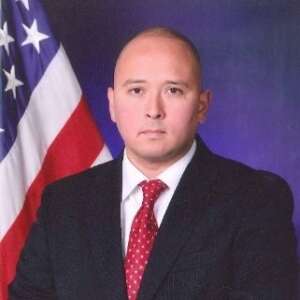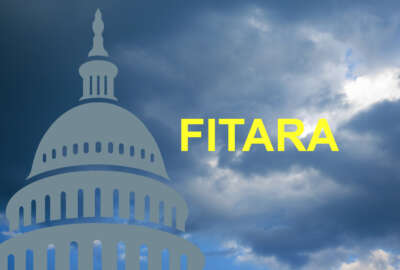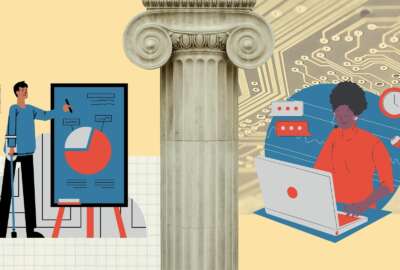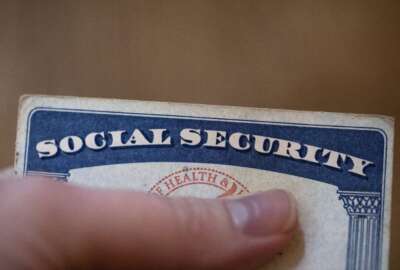With FITARA 17 coming, Education shows what an ‘A’ grade signifies
Luis Lopez, the Education Department’s chief information officer, said the new customer advisory council is helping drive technology modernization decisions...
The Education Department was one of three agencies to receive an “A” grade under the 16th iteration of the Federal IT Acquisition Reform Act (FITARA) scorecard.
And while earning the top mark on the scorecard is an accomplishment, Education’s real achievement is in how it’s experiencing the impact of FITARA to deliver technology services.
Luis Lopez, the Education Department’s chief information officer, said the underlying tenets of FITARA is helping the agency better manage and modernize its IT systems.

“This is not just an OCIO effort. This is something that, while we foot stomp, the execution of all the principal offices and their engagement has been refreshing,” Lopez said on Ask the CIO. “This FITARA score has to be with the work of all of the CXOs. I think that relationship that’s been going on for years, which is why you’ve seen since June 2017, the eight Bs and the two As. That relationship has been there and fostered and grown by [our] team. So it’s just a matter of continuing to improve, and I think we’re in that right place.”
Rep. Gerry Connolly (D-Va.), the co-author of FITARA, will release the 17th iteration of the scorecard on Thursday. The CIOs at the Office of Personnel Management, the Nuclear Regulatory Commission and the U.S. Agency for International Development and the Government Accountability Office are expected to join the roundtable discussion.
Part of that effort is Lopez set up a customer advisory council last summer to get more out of FITARA than just the letter grade. Lopez said he uses the council to help explain to non-IT executives why the 2014 law matters to them and it’s more than just a technology priority.
“When we explain that in such a way to some of the senior executives in the senior customer advisory council, they start seeing that picture. It’s like, ‘oh, okay, that makes sense. Maybe I don’t want to go buy this new tool for this this system that I want because maybe I can leverage something in the portfolio that we already had. And let’s maybe sunset something else,’” he said. “Everyone becomes more mindful of not just cost savings and avoidance, but is this really the best for our environment, and, then, how does that translate to the modernization efforts?”
The customer advisory council also helps Education with the IT governance process.
Lopez, who became CIO in December 2022, said a good example of the impact of the council came during the pandemic when Education consolidated and standardized the number of video teleconferencing and collaboration tools.
“I think we probably had about 65 that we’ve installed across our entire enterprise, which gives us the ability to use different collaboration tools, whether it’s Teams or Zoom or WebEx or what have you,” he said. “But they understand that there is a governance process for a reason and that there is an IT sprawl going across the board if everyone gets their own solution. I can tell you several years ago, that’s what happened around collaboration tools. But when we go back and articulate this to the staff across the board, they understand that there is a governance process for a reason.”
Big savings from EIS
While Education may not have consolidated the tools, it did bring them under a better management approach because of FITARA and through the Enterprise Infrastructure Solutions (EIS) contract.
Education is one of a few Cabinet agencies to have fully transitioned to EIS from the Networx contract.
“Folks are engaging and really embracing what EIS has brought. We used to only have guest WiFi for anyone who was a guest at our D.C. buildings, and two of our regional buildings out of 17. Now we have guest WiFi in all of our buildings, and we also have government WiFi in our buildings,” Lopez said. “We were able to do that all by cost savings and avoidance on top of that. This is where FITARA comes to mind with EIS. We’re modernizing our technology, we’re getting our portfolio better, and we’re also reducing our costs, which allows us to redirect those dollars for something else. It’s not easy, which is why I think we’re with EIS for the next 11 to 12 years. It’s a large contract that is giving us a lot of flexibility to modernize for our customer base.”
The governance over the collaboration and teleconferencing tools came at a good time as the number of calls reached 800,000 a month, up recently from 60,000 a month pre-pandemic.
Additionally, through EIS, Education is providing employees an alternative to a desk phone or even a mobile phone, called a “soft phone,” which lets users have a dedicated phone number through their laptop.
Lopez estimated that Education will save $36 million to $40 million by transitioning to and taking advantage of the modern technologies under EIS.
Lopez said the website consolidation contract is another example of how FITARA has helped drive modernization.
Website, other upgrades coming
He said the technology behind the Ed.gov site hasn’t been upgraded in 20 years.
“We want to get a website that is obviously aligned to the 21st Century IDEA Act. One that is more personable so we’re aligning to different personas, whether you’re an educator, a student or whatever the case may be. We want to make sure that it’s easier to align and get that customer service,” he said. “We’re probably getting a lot more buying power and not only that, but we’re also getting better governance, not just from the IT portfolio, but also the look and feel of that website. When the public goes to Ed.gov, they will find everything they need.”
He said Education will complete phase 2 of the website modernization by June and all four phases by 2025.
Another major priority in 2024 is to finalize the award for its hosting environment. While Lopez said he couldn’t offer too much since the recompete is in the middle of source selection, Education doubled the size of its footprint since the last contract award and the amount of data has exploded.
Education’s move to a zero trust architecture also is a big focus this year.
“We received Technology Modernization Fund dollars to implement secure access service edge (SASE) technology, or at least our very first big phase of it, which is that always-on encrypted connection. What that does is we will use that to get on your laptop, you click the button and then it puts in the virtual private network (VPN). We’re a lot more secure. We’re a lot faster and the customer loves it,” he said. “We’ve seen tickets drop with VPN problems. That overall experience in the ZTA space is a big one that we’re looking to complete.”
Copyright © 2025 Federal News Network. All rights reserved. This website is not intended for users located within the European Economic Area.
Jason Miller is executive editor of Federal News Network and directs news coverage on the people, policy and programs of the federal government.
Follow @jmillerWFED







